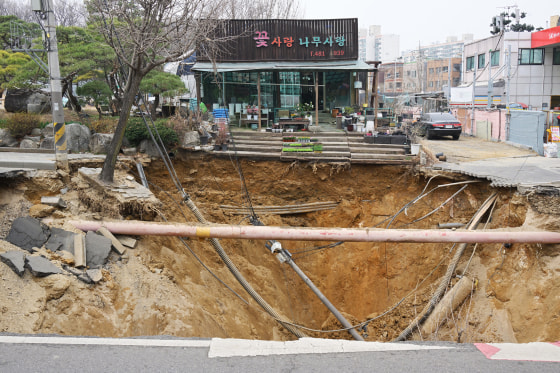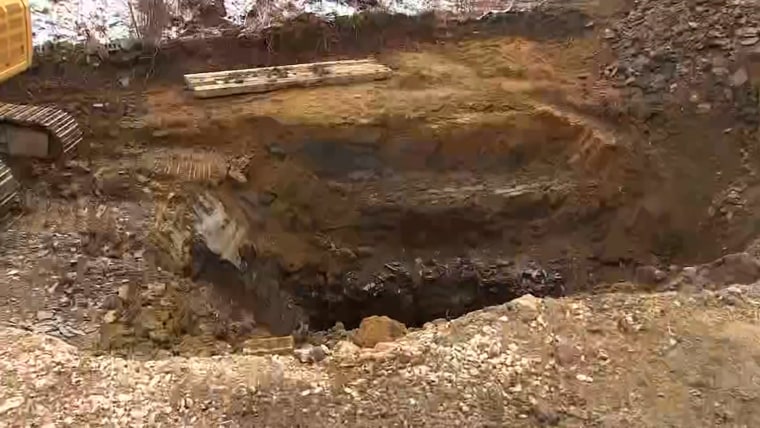A motorcyclist died after he fell into a sinkhole in the South Korean capital, authorities said Tuesday, in the latest such fatal incident.
The man in his 30s, who has not been publicly identified, was found in cardiac arrest around noon local time Tuesday, the day after a sinkhole about 65 feet wide and 65 feet deep opened up without warning as he was driving down a street in Seoul, according to the Gangdong Fire Station.
The massive sinkhole appeared around 6:30 p.m. Monday (5:30 a.m. ET) near an intersection in the Gangdong district of Seoul.
A dashcam video geolocated by NBC News showed the motorcyclist plunge into the sinkhole while a car in front of him jolted violently as its rear wheels barely avoided the chasm.
His body was discovered about 160 feet below the center of the sinkhole after an overnight search involving about 40 rescue personnel. Rescuers also found the victim’s mobile phone and motorcycle.
The search operation, which lasted 17 hours, was difficult because of the water and soil mixed together at the scene and the entangled heavy machinery from a nearby construction site, an official from the fire station told reporters Tuesday.
“It was only after draining the area and deploying heavy equipment to remove the soil that we were able to locate the man,” he said.
A woman in her 40s who was passing through the site before the sinkhole opened sustained a minor injury and was recovering in the hospital.

The cause of the sinkhole remains unknown. Seoul officials said they planned to conduct a “detailed and comprehensive investigation.”
“We will identify the cause of the accident as quickly as possible to ensure that such incidents are not repeated and that citizens can use the roads confidently,” Seoul Mayor Oh Se-hoon told reporters at the scene Monday.
The sinkhole “appears to be due to collapse of infrastructure,” Andrew Farrant, a geologist at the British Geological Survey, said in an email Tuesday.
While natural sinkholes are caused by the dissolution of soluble rocks such as limestone and salt, other sinkholes are formed by the collapse of human-made underground voids, notably old mine workings and tunnels, Farrant said.
Since it’s hard to protect oneself from a hole suddenly opening up, more could be done to prevent the forming of sinkholes, with a good ground investigation being “essential,” he said.
Climate change, in particular more frequent and heavy rain, combined with increasing urbanization is likely to generate more sinkholes in future, he added.
Seoul officials said 223 sinkholes appeared in the city from 2015 to 2024.
Sinkholes can be human-induced, with some correlated to land-use practices such as groundwater pumping and construction, according to the U.S. Geological Survey.
In a similar incident this year in the Japanese city of Yashio, a sinkhole the size of a large swimming pool swallowed a truck and its driver. The 74-year-old driver was never found after a two-week search.
Officials said a damaged sewage pipe most likely caused the hole.
There is no database for sinkholes in the United States, but according to the U.S. Geological Survey the states with the most reported damage from sinkholes are Florida, Texas, Alabama, Missouri, Kentucky, Tennessee and Pennsylvania.
In December, a 64-year-old woman searching for her cat was found dead in Westmoreland County, Pennsylvania, several days after she fell into a sinkhole that authorities said was most likely caused by mine subsidence.


